Discussion in the Czech – more information HERE
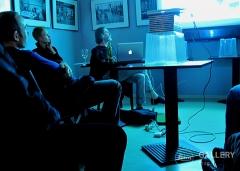
On Monday, 10th October 2011, at 7 pm.
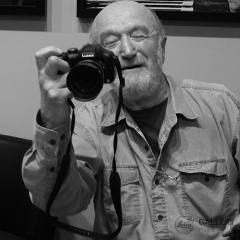
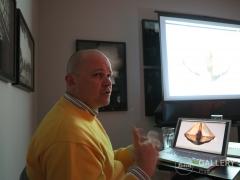
On Monday, 26 March, 7 pm in Leica Gallery Prague. Slovak photographer Lubo Spirko will speak mostly about the underwater photography.
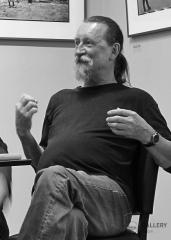
The discussion with Jiří Hanke takes place on Monday September 26, 2011 at 7 pm in Leica Gallery Prague. The anchorman of the discussion will be prof. Vladimír Birgus.
For the latest exhibition Hanke has chosen, together with the exhibition curator Vladimír Birgus, photographs across his photographic collections, in many cases not published till this time, created between 1980 to 1990 exclusively in Kladno, his native town, where Jiří Hanke lives, and to which he dedicated most of his photographic work.
J. Hanke was born in Kladno, April 15th 1944. He graduated from the Kladno Grammar School and in 1962 he commenced work at the Kladno branch of the State Savings Bank. During his compulsory military service he first published his photographs. At that time he performed as a singer /songwriter of protest songs. In 1977 Hanke started his Small Gallery in the premises of the then State Savings Bank, gradually the dramaturgy oriented exclusively on photography. He lives in Kladno, his wife Jiřina Hankeová is the photographer and the artist
More about the exhibition “Kladno – the 80’s” can be found HERE
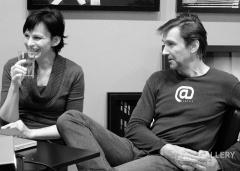
On Monday, April 23, at 7 pm in Leica Gallery Prague. Photographer Evžen Sobek will speak mostly about the topic: how should succesfull photography look like?
Discussion in the Czech – more information HERE
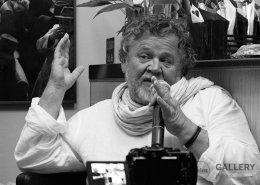
The discussion with Antonín Kratochvíl takes place on Monday June 27, 2011 at 7 pm in Leica Gallery Prague. The anchorman of the discussion will be prof. Vladimír Birgus.
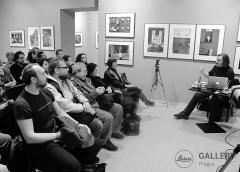
Jan Lukas (1915 České Budějovice – 2006 New York, USA)
One of the pioneers of Czech modern photography and film. He studied photography in Vienna (with professor Rudolf Koppitz) and worked between 1936 and 1938 as a cameraman in Bata’s Zlín, where he collaborated with A. Hackenschmied, E. Klos, J. Lehovec, L. Kolda, K. Plicka and others.
In the thirties Jan Lukas worked for European magazines Lilliput, Der Sonntag and Wiener Tag, as well as for Eva and other Czech periodicals. In 1939 he became a member of the art group The Seven in October (Sedm v říjnu). While it was mainly documentary photography for which he became famous, his work comprises a wide spectrum of genres, from landscapes to reportage to portrait. During his professional career he witnessed many crucial moments of Czechoslovak history: he took pictures of president Edvard Beneš at the time of Munich Agreement and documented the mobilisation of Czechoslovak troops, Nazi occupation, liberation, rise of communism, as well as the oppression of the fifties. These pictures form his essential collection Prague Diary 1938–1965 (Pražský deník 1938–1965). After his emigration in 1965, publication of Jan Lukas’ photos was prohibited in Czechoslovakia. At that time, the collection Italian Diary 1965–1966 (Italský deník 1965–1966) was born, documenting ten months in Italian refugee camps. However, his most famous publication is the 1946 book The Earth and the People (Země a lidé), by which he firmly established himself in the European humanistic photography tradition.
After obtaining US citizenship in 1971, he set to work on the book The Islanders (Ostrované), in which he documented life in Manhattan, Jerusalem, West Berlin and Taiwan. In the US he gained professional recognition – for example, he created covers for the biweekly National Review and took part in the creation of Firing Line TV show. He finished the cycle New York – Pompei (New York – Pompeje), confronting the world of the vanished Italian city Pompei with the colours and nooks and corners of the city he lived in. In 1968 the influential Cornell Capa exhibited his Prague Diary 1938–1965 in the Riverside Museum in New York, reacting in so doing to the Soviet occupation of Czechoslovakia.
The motley mixture of races and cultures, the unique and ever changing atmosphere of the American city, was captured by him in colours as well. In these compositions he advanced his lifetime endeavour to express the beauty, as well as the dark side of the world. Jan Lukas did not revisit his homeland until 1989. His most extensive retrospective ever, Photographic Diary 1930–1990 (Fotografický zápisník 1930–1990), was opened at the Prague Mánes gallery in 1995 by his friend Pavel Tigrid.
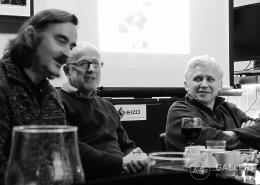
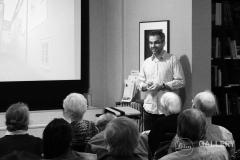
Film director Aleš Kisil presents his documentary Two Friends – Two Fates about the two great personalities of Czech culture: the photographer Jan Lukas and the poet Emanuel Frynta. Monday, May 28, 2012 at 7 p.m. The film screening is free of charge; reservation required – ik@lgp.cz
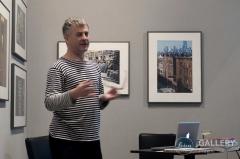
Monday, June 11, 2012 7 p. m. Leica Gallery Prague. The discussion is free of charge; reservation required – ik@lgp.cz.
Miro Švolík was born in 1960 in Zlaté Moravce (Slovakia), he studied the applied photography at the Secondary School of Applied Arts in Bratislava. In 1987 Švolík took a degree at the Film and TV School of the Academy of Performing Arts (FAMU), Prague. He has been the free-lance art photographer since 1988, in years 2007–2010 he worked as curator in Solnice and Galerie Basilika in České Budějovice. Miro Švolík is the head of Creative Photography Studio at Academy of Fine Arts and Design (VŠVU) in Bratislava since 2009.
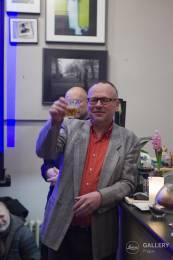
On Monday 31 January 2011 at 7 p.m., at the LGP, there will be a meeting with Mr. Jiří Siostrzonek on relationships of photography with sociology and psychology. The auditory will learn how to recognize the visual message, and how to „read“ photography. At the lecture, amply illustrated with photos, Mr. Jiří Siozstronek will talk about the picture symbolism. Above all, the meeting with „Photography in a different way“ is intended for those interested in photography laps into other fields, other worlds of knowledge.
We take photographs of everything that addresses us. We create our personal picture diaries. On the one hand we are supersaturated with picture information, on the other hand, paradoxically, we wrestle with a picture illiteracy. It is customary that we often cannot read a visual message because we do not know the visual grammar, style, symbolical communication. In order to understand photographic pictures not only on the surface, we need to be provided with understanding, knowledge and life experience that intensify our enjoyment at the reading of photography.
Mr. Jiří Siostrzonek is the deputy leader of the FPF Institute of Creative Photography of Silesian University in Opava, where he teaches the principles of sociology and art psychology, history of visual arts and cinematography. He lectures at the Philosophical Faculty of Palacký University in Olomouc, at Tomáš Baťa University in Zlín and also at the universities in Polish Poznan, Katowice, and Wroclaw.
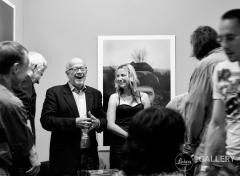
The authors of the monograph Selfportraits Dita Pepe and Vladimír Birgus will be the guests of Leica Gallery Prague. On Monday, June 25, 2012 at 7 p.m. The discussion is free of charge; reservation required – ik@lgp.cz.
In her photographic self-portraits, the Czech photographer Dita Pepe (b.1973) shows that she is a woman of many faces. One face is that of the self-confident wife of a rich businessman. Another is that of a simple country girl in a dress and floral-print smock, sitting together with a similarly dressed old woman in a home for the elderly. In a third photo she is the mother of a large Roma family. And in others she is an affectedly smiling collector of rare china and one of two sportswomen confidently displaying their muscular bodies in leotards. Daughter, grand-daughter, sister, or friend of many women. Wife, lover, or friend of many men. Mother of many children. Chameleon. Dita Pepe has created dozens of meticulously staged self-portraits in which she changes her age, character, and social status, and adapts to the people with whom she is photographed. She is an artist of works in which staged photography distinctively mixes with sociological documentary work, the psychological characterization of specific people merges with a generalizing picture of various cultures, classes, or gender stereotypes, ‘high art’ blends with pop culture, postmodernism with conceptual art, the sociological portrait with fashion photography.
This is the first book about Dita Pepe. Its author, Vladimír Birgus, is a photographer and an historian of photography, a professor and the head of the Institute of Creative Photography at Silesian University, Opava.